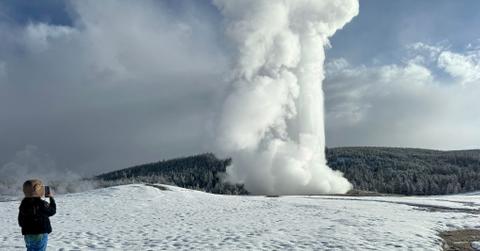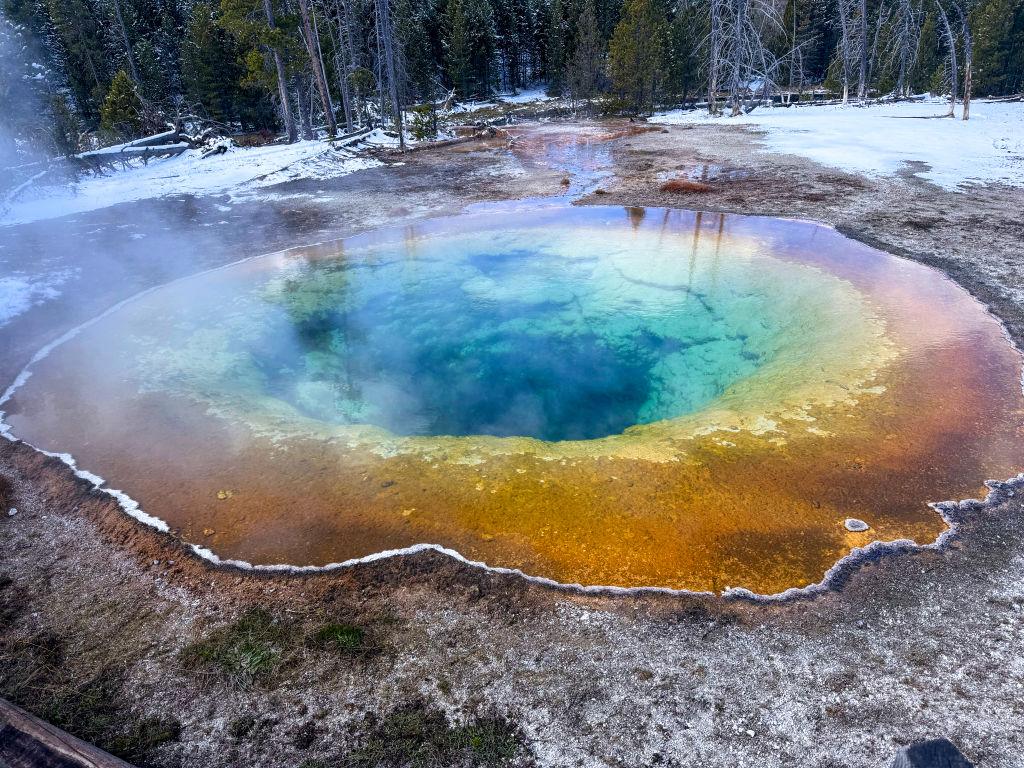No, the Yellowstone Explosion Wasn't a Volcano — but the Park Is a Supervolcano
The explosion was the result of a hydrothermal reaction and was not from a volcano.
Published July 23 2024, 7:13 p.m. ET

Videos have started circulating of a large explosion that happened at Yellowstone. A large pillar of black and gray smoke and soot is seen rocketing into the sky in these videos, scaring those visiting the national park and confusing those who have seen the video online. Is there a volcano in Yellowstone National Park? Let's break down what this video is showing.
Is there a volcano in Yellowstone National Park?
Though the various geysers throughout Yellowstone are what often bring the tourists and visitors to the park, these features are actually a result of the volcano that's seated at the national park.
The volcano's biggest eruption happened more than two million years ago, covering more than 5,500 square miles in ash. The last major eruption from the volcano was more than 600,000 years ago — and it doesn't seem that the professionals are worried about it happening again anytime soon.

How big is the volcano at Yellowstone?
Though visitors go in and out of the park every single day, Yellowstone itself is actually a volcano so big it's been classified as a "supervolcano."
Though that may seem scary, it's been tens of thousands of years since it's left its dormancy state. There is no reason to worry about an eruption at Yellowstone anytime soon, and experts are monitoring the park to ensure that visitors are safe should the supervolcano become active again.
The explosion at Yellowstone was not from its volcano.
Despite Yellowstone technically being the site of a supervolcano, the video that's circulating around the internet isn't of that volcano exploding. Instead, it's a video of a hydrothermal explosion that happened in the Biscuit Basin area of the park.
This happens when water that is trapped below the surface of the Earth is heated to extreme temperatures, converting to steam and forcing its way out. When this happens, the result is often a geyser of hot water, steam, mud, and other early debris.
Though this is not a volcanic eruption, it did force the park to close on July 23 as the staff at the park assess the damage and ensure it's safe for visitors again. Though occurrences like this aren't particularly common, they're possible at places like Yellowstone.